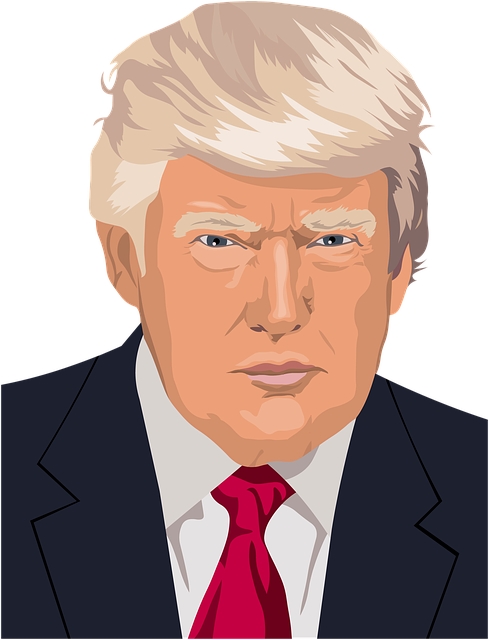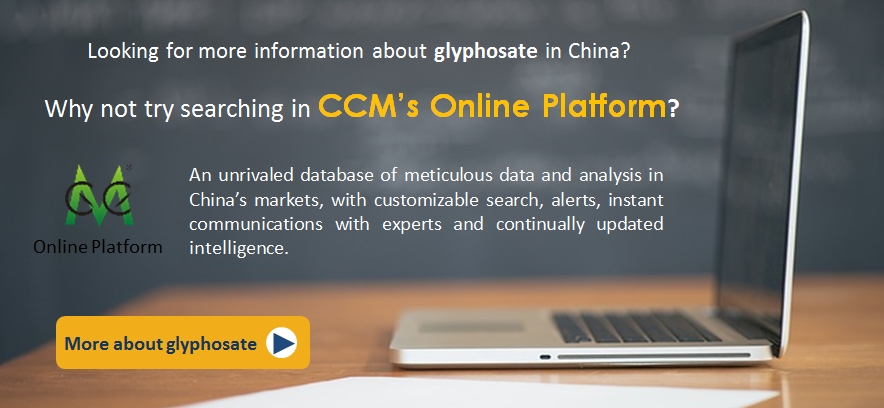The
USA under president Donald Trump has threatening multiple times to change
current trade relations with China, including to raise tariff rates for Chinese
products. This also applies to agrochemicals like glyphosate, of which China
represents the worldwide largest producer and exporter. Market intelligence
firm CCM has analysed the effects of the new trade policy regarding China’s
glyphosate industry.

Source: Pixabay
China
is the world’s largest producer of glyphosate. Furthermore, about 80% of
China’s glyphosate output is being exported, which also lists China as the
largest exporter. In 2016, the total export volume of glyphosate exceeded 812
million kg, according to trade analysis firm Tranalysis. Hence, the
industry in China is heavily dependent on global market demand and very
vulnerable to changing import policies in the main destination countries, like
the USA. With an export volume of over 65 million kg in 2016, the USA is the
third biggest importer of Chinese glyphosate, right after Australia and Brazil.
Following
several verbal attacks from the president of the USA, China’s government is
preparing for trade penalties by Trump’s administration in the USA. The
advisers around Chinese president Xi Jinping are expecting huge tariff
increases on China’s strongest export goods, including agrochemicals like
glyphosate. According to Premier Li Keqiang, China is not interested in a trade
war with the USA, but it will be prepared if the relationship gets more frozen.
Market intelligence firm CCM has analysed the effect of Trump’s policy on
China’s glyphosate industry, if he is turning words into actions.
According
to Environmental Sciences Europe, genetically engineered herbicide-tolerant
crops are accounting for over 50% of worldwide glyphosate use. Especially in
the USA, there is no pesticide even comes close to the use of glyphosate. As a
result, stricter regulations and tariff rates for Chinese manufacturers will
generate difficulties in the world’s largest exporter.
First
of all, high tariff rates will inevitably intensify China’s economic downward
pressure as well as does the Renminbi depreciation stress. The stable oil price
on a low level will additionally increase problems for the glyphosate industry
in China.

CCM
has analysed the effect on the glyphosate industry and summed up the likely
trend in three main points.
The
glyphosate price in China will be more fluctuating and the export volume is
going to suffer, when the USA keeps appreciating the dollar. This is due to the
stockpile amount Chinese manufacturers are willing to hold at different times
of interest rates by the USA. To be more specific, the stockpile amount will
decrease for higher interest rates and costs, while the other way around when
interest rates are low. A smaller stockpile leads to a more unstable glyphosate
production, which is likely going to elevate prices in busy seasons and drops
them in off-seasons.
Secondly,
Higher tariff rates will inevitably reduce China’s market share in the USA.
According to CCM, the USA tries to balance the appreciating dollar out with
higher tariff rates for Chinese companies to get market share in the USA for
glyphosate enterprises. The answer of Chinese manufacturers is likely to establish
the business hub in another market outside the USA.
After
a deeper look into the 22 most important importers of China’s pesticides in
general, a huge amount of important agricultural countries is being visible.
Two of them are the biggest importers of pesticides, like the USA and Brazil.
As a fact, the global share of agricultural production is highly concentrated.
According to the Food and Agriculture Organization of the United Nations from a
report in 2014, the share of the 10 most important agricultural producers of
Soybeans, Rice, Cotton, and Wheat is 95%, 83%, 81%, and 70% respectively.
Furthermore,
the big agricultural nations also include countries with few pesticides imports
yet, like Bangladesh, Burma, Cambodia, Uzbekistan, Turkmenistan, Kazakhstan,
Ukraine, Tanzania, and Mali. Looking at a map it becomes clear, that many of
these nations are located on the Belt and Road.
CCM
has analysed the fastest growing importing nations of China’s pesticides in
2015 and states, that many of the promising big agricultural producers already
are in the list of the fastest growing importers of Chinese pesticides, like
Iraq, Kazakhstan, and Uzbekistan with a year on year growth in export value of
146.73%, 48.48%, and 46.50% respectively.
This
demonstrates, that the trend of Chinese pesticide, and therefore also
glyphosate, manufacturers are already going in the direction of emerging this
markets. The trend is very likely to even grow faster in the near future, with
the support of China’s the Belt and Road strategy. These new emerging countries
in Asia, Africa, and the middle east are promising new markets for Chinese
glyphosate.

Finally,
another Trump policy to have impact on China’s glyphosate market will be the
focus on fossil energy despite bio-energy. Less demand for bio-energy will
result in less demand for corn, which is the main contributing material for
bio-energy. Hence, the prices of corn further decline, which attracts farmers
to switch to soybean production. With its own law of development, an extended
downturn of glyphosate industry will not be reflected in full-blown slump of
seed and agrochemical industries.
What’s
more, the retreat of the USA from economic globalization will likely enhance
China’s power in international trade agreements. Many countries are willing to
offer China better trade terms to react on weakening economic ties with the
USA. Stronger bound into international ties is then enabling international
competitiveness of China’s manufacturers and traders.
According
to CCM, the price development of glyphosate in 2016 in China was marked by a
fall in the first half with a stronger rise in the second half of the year. The
price rise hereby can be explained by the production curtailment in May 2016 as
well as rising costs for enterprises together with limited production and
stringent conditions related to the increasing efforts of environmental
protection.
As
analysts state, the environmental protection is affecting the glyphosate market
development in China the most and is expected to put into practice with the
promotion of the supply-side structural reform. The implementation of
environmental protection policies will remove outmoded capacity in the industry
and eliminate all enterprises beyond the new standards. Currently, Chinese
glyphosate industry is still under the pressure of environmental protection, as
industry regulations and environmental rehabilitation promote, the supply and
demand pattern of the industry will be improved dramatically.
About
CCM
CCM
is the leading market intelligence provider for China’s agriculture, chemicals,
food & ingredients and life science markets.
Do
you want to find out more about the glyphosate market in China? Try our Newsletters and Industrial Reports or join our professional online platform today and get insights in Reports, Newsletter, and Market Data at one place.
For
more trade information of pesticide products, including Import and Export
analysis as well as Manufacturer to Buyer Tracking, contact our experts in trade analysis to get your answers today.
Looking
for a convenient way to get comprehensive and actual information as well as a
platform to discuss with peers about the latest agrochemicals industry and
market trends? Simply subscribe to our YouTube Channel and join our groups on LinkedIn and Facebook.